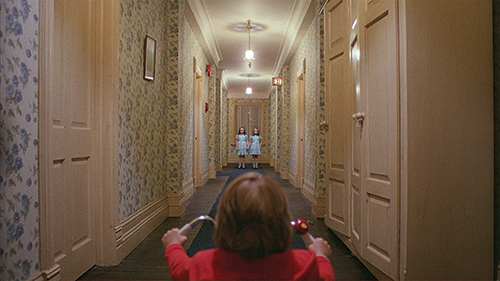
Which was better, the book or the film?
This question has plagued moviegoers and bookworms ever since early filmmakers began adapting classic books for the screen.
Good adaptations not only do justice to the book but also give new meaning to the story. Inspired directors and screenwriters always find a way to put their own spin on and lend their own style to the original story, both of which keep things interesting for the audience.
The Northwest Film Center is sampling some classic page-to-screen adaptations over the next month as part of its Literature Into Film series.
The center is offering the public the opportunity to view and study these films. Audiences will not only watch the film but also discuss the issues, aesthetic choices and creative interpretations that arise during the transition from page to screen.
Stanley Kubrick’s adaptation of Stephen King’s The Shining has played an important role in the world of cinema, particularly in regard to adaptations.
Kubrick was no stranger to literary adaptation. The director mined novels or short stories for his adaptations A Clockwork Orange, Lolita, 2001: A Space Odyssey, Full Metal Jacket and more.
The Shining was the third of King’s novels to be made into a feature film, and even then it was no secret that the author disapproved of Kubrick’s artistic interpretation. The two visionaries butted heads on everything from casting to script to supernatural beliefs.
For those unfamiliar, The Shining tells the story of Jack Torrance, his wife Wendy and their son Danny. Jack is hired to be the caretaker of the isolated Overlook Hotel (filmed at Mt. Hood’s Timberline Lodge) while it is closed during the winter months.
While there, Jack’s sanity is consumed by an evil presence in the lodge, and he turns an axe on his family. Meanwhile, Danny’s telepathy kicks in, and he catches glimpses of the hotel’s tortured past.
The Shining is a very visual film. There’s no excessive dialogue and plenty of beautiful cinematography and breathtaking landscapes. The only thing that ruins the way this film looks is Wendy’s wardrobe.
The editing and music work perfectly in tandem to create both a visual and audible feeling of suspense. It’s beautifully done and a technical masterpiece, but the film’s aesthetic choices aren’t what caused riffs between The Shining’s author and its director.
King stated that he believed Kubrick to be “a man who thinks too much and feels too little.” It shows in his film—but, unlike King, I don’t find Kubrick’s point of view to be a hindrance. The lack of emotion is still an emotion; it makes his films that much more disturbing.
The use of the “Kubrick stare”—the shot of a man glowering up at the camera from beneath lowered brows, often paired with a psychotic smirk—only adds to the film’s sinister overtones.
The primary goof in this film is Kubrick’s lack of commitment to the conflict’s instigator. In King’s novel, there were more references to ghosts and the supernatural, and a bigger emphasis was placed on the fact that Jack’s insanity was caused by the spirits haunting the hotel.
In the film version, the audience believes that Jack succumbs to the psychological affliction of cabin fever.
The fact that the hotel is built on ancient native burial grounds is tossed casually and obligatorily into the script only once. Not to worry, though; ancient native burial grounds got their 15 minutes of fame two years later in Poltergeist.
The Shining (1980)
Friday, April 26, 7 p.m.
Saturday, April 27, 7 p.m.
Part of its Literature Into Film Series Schedule
Whitsell Auditorium
1219 SW Park Ave.
$9 general admission, $8 student
Kubrick was unable to fully commit to either an internal or an external driving force behind Jack’s actions. As a result, neither method of madness was fully fleshed out or entirely believable.
King and Kubrick also clashed over parts of the story that held special sentimental value for the author but that Kubrick didn’t feel the need to incorporate.
King integrated autobiographical elements—like King’s history with alcohol abuse and his unprovoked feelings of rage toward his family at the time—into Jack’s character that
Kubrick downplayed or downright ignored in his adaptation.
The other major difference between the novel and the film is the ending. One version left the Overlook Hotel in flames, the other in ice; one ending redeemed Jack, the other not so much. Though they vary drastically, the endings are oddly fitting for their respective stories and points of view.
The key to appreciating book-to-film adaptations lies in the history and stories unavailable to the public—the most interesting stories are told between the lines and behind the scenes.

